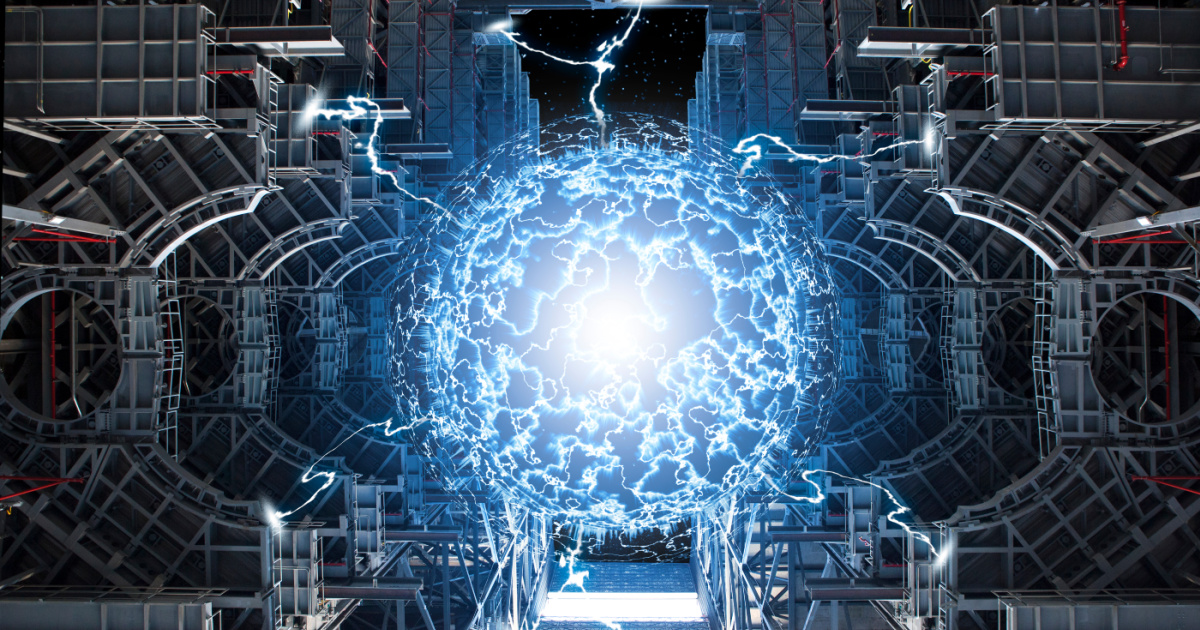
The world – at least, the scientific one – has been on the hunt for the cleanest, most efficient way to fuel our needs for decades now.
Every year, they get a little closer and a little cleaner with nuclear fuel.
Now, scientists in the UK are saying they’ve surpassed the previous record for nuclear fusion output.
The test, performed at the Joint European Torus (JET), resulted in high-fusion power for 5 seconds, while releasing 69.26 megajoules of energy from a mere 0.21 milligrams of fuel.
The fuel, in this case, is a mixture of two types of heavy hydrogen, deuterium and tritium.
This is about the same amount of energy we get from 4.4 pounds of coal.
Their record is especially impressive when you realize that JET is sort of the wayfinder for full-scale prototypes like ITER and DEMO.
The former is set to generate 10 times as much energy as put in, and DEMO could reach 25 times the amount it started with.
Professor Ambrogio Fasoli, CEO at EUROfusion, says the results at JET definitely make it clear that the technology has promise.
“Our successful demonstration of operational scenarios for future fusion machines like ITER and DEMO, validated by the new energy record, instil greater confidence in the development of fusion energy. Beyond setting a new record, we achieved things we’ve never done before and deepened our understanding of fusion physics.”
He’s also happy the fuel mixture worked so well.
“We can reliably create fusion plasmas using the same fuel mixture to be used by commercial fusion energy power plants, showcasing the advanced expertise developed over time.”
All three facilities use a design known as a tokamak. With it, the fusing plasma is contained in a donut-shaped chamber by powerful magnets. We have to get creative when it comes to achieving the pressures and temperatures required for fusion, which means heating plasma to at least 100 million degrees.
Once there, the plasma releases a lot of energy. One drawback is that it sometimes comes in bursts that damage the confinement walls. Another is that helium is a byproduct and has to be safely discarded.
The recent test at JET proves that both of these challenges are solved easily enough, at least according to Emmanuel Joffrin, EUROfusion Tokamak Exploitation Task Force Leader.
“Not only did we demonstrate how to soften the intense heat flowing from the plasma to the exhaust, we also showed in JET how we can get the plasma edge into a stable state thus preventing bursts of energy reaching the wall. Both techniques are intended to protect the integrity of the walls of future machines. This is the first time that we’ve ever been able to test those scenarios in a deuterium-tritium environment.”
The goal with nuclear fusion is to reach a Q factor higher than one, which means getting as much energy out as you put in. So far, the only experiment to achieve that was one at the Inertial Fusion System, which earned a Q of 1.5.
Creative Commons License: ORNL History/CC BY 2.0 DEED
The best JET has managed is 0.69, but their output was 20x higher than what the Inertial Fusion has achieved.
No matter how exciting this news is for everyone at JET and around the industry, we’re still a couple of decades from commercial fusion power stations.
That said, it’s definitely encouraging.
If you think that’s impressive, check out this story about a “goldmine” of lithium that was found in the U.S. that could completely change the EV battery game.